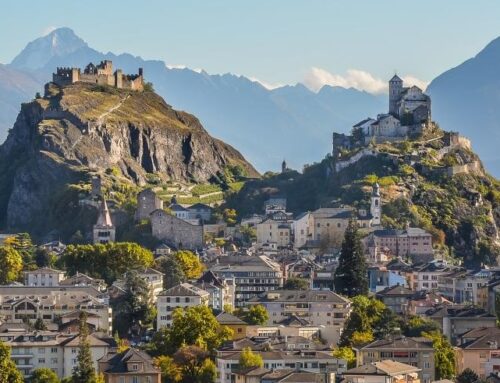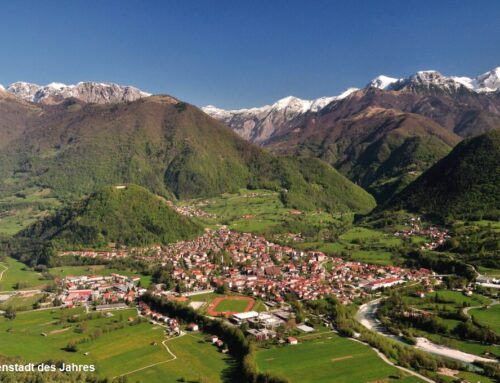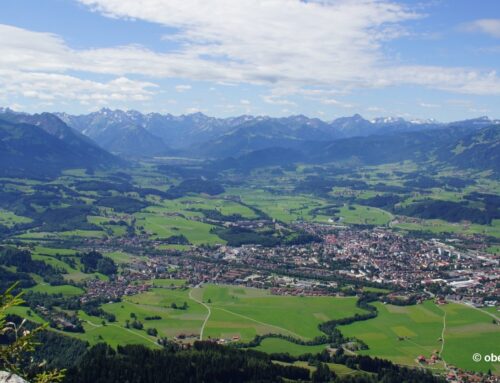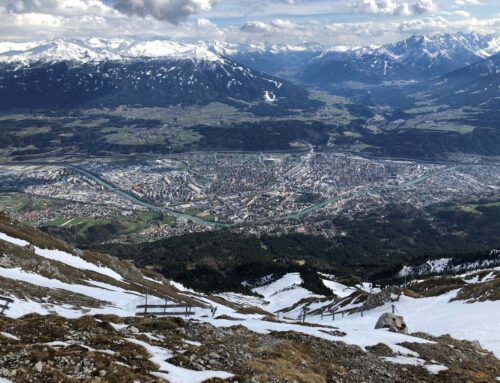Maria Pia Gennaio Franscini (Geographer) and Josianne Maury (Architect) both work at the Swiss Federal Office for Spatial Development in the area of settlements and landscape. With their work, they help to advance sustainable spatial development in Switzerland. This is the fourth time that the Confederation has funded a number of innovative projects in this area from municipalities, regions, agglomerations, and cantons. Their expertise in rural and mountain areas and agglomeration policy helps to gain a new perspective on the topic of Alpine towns. Together we talked about how they perceive Alpine towns, what developments they expect and how they contribute to their sustainable development in their work.
What is your favorite Alpine town and why?
Maria Pia: I’m interested what the architect will say… When I think about this question, I realise that I don’t know that many Alpine towns. However, I think Salzburg is truly beautiful.
Josianne: One city I particularly like is Annecy in France. The city delights with its very unique and classical architecture. And the fact that there is water, or rather a river, gives the city a Mediterranean as well as alpine touch. In summer you have the impression of being at the seaside in Southern France, but also in winter, it is wonderful. You feel good in Annecy.
What is your understanding of (the term) Alpine towns?
Maria Pia: When talking about cities in Switzerland, criteria like 10’000 inhabitants and so on are taken into consideration. That’s why I think directly of a larger town. Smaller towns (I would call them “centres” in German) in the Alps also have important peri-urban functions for whole regions. What do you think Josianne?
Josianne: Well, actually I don’t make a difference between an Alpine town and a classical town. Because there are two elements in the definition of a French town. On the one hand the size, but on the other hand the multifunctionality. It has to be a town with a centre, with shops, generally a town that lives all year round and not a town that only comes alive during the tourist season.
Maria Pia: Yes, I’m wondering if there is actually a separate definition of towns in the Alps. Because there’s also many regional centres outside the alpine perimeter that fulfil this element of multifunctionality.
What is the connection between your work and Alpine towns?
Josianne: Alpine towns are at the centre of Maria Pia’s and my work but in different ways. In my case, Alpine towns are considered through the agglomeration policies as they are the engines of these regions. For Maria Pia Alpine towns provide important functions due to their connectivity with rural areas.
Maria Pia: Exactly. I actually have less immediate contact with towns and agglomerations in the alpine region but points of contact exist because Alpine towns also provide important networking functions for their surroundings. Generally, my work focuses on rural and mountainous areas.
What do you consider specific opportunities and risks for Alpine towns in terms of a sustainable future?
Josianne: The main challenge in my opinion is to place sufficient weight on Alpine towns in our work. During the pandemic, one could observe a huge increase in remote work. This means that working is possible from any location and the choice of where to live is much more flexible. New opportunities have arisen for Alpine towns, target groups such as families or others are entering the spotlight. Their lifestyles are calmer and simpler. One challenge, however, will be to consider these cities as a whole and not only for tourism purposes or in an alpine context.
Maria Pia: Yes, I agree and maybe sharpen their roles and functions because they fulfil important tasks in terms of accessibility (mobility) and provision of basic services. Alpine towns could certainly identify themselves more with this role.
Josianne: To follow up on what I have said before if people start to settle down in new towns it is important to think about the additional services and facilities required for the population. People have different needs when they settle somewhere compared to when they just go on holiday. This could create new dynamics. However, this results in an increased demand for housing simultaneously revealing the tensions between the local population and second home owners.
How do you think your work contributes to the sustainable development of Alpine towns and strengthening them in the future?
Maria Pia: We are currently working on the development of the agglomeration policy and the policy for rural and mountainous areas. This means Alpine towns are one of the motors of economic, social and cultural development. They provide services that not only benefit them, but also their surrounding areas. Through pilot projects, we would like to strengthen the cooperation between centres and surroundings.
Josianne: I agree with Maria Pia, networked thinking will be key in the future. Additionally, there is potential in the area of governance. How can these places become more alive? However, this is a general issue and not just alpine specific. We made many experiences and collected a lot of information and now it’s time to transfer these findings into an alpine context and approach them comprehensively. In this way, we can contribute to adapting Alpine towns to climate change and mitigating its consequences, thus making the Alps fit for the future.




